![]()
Mon, Feb 21, 2011 | The Meir Amit Intelligence and Terrorism Information Center

Sheikh al-Qardawi at a mass rally in Cairo's Tahrir Square (Al-Jazeera TV, February 18, 2011). In his speech he called for the liberation of Al-Aqsa mosque and asked the Egyptian army to open the Rafah crossing.
Hamas Tries to Exploit the Egyptian Revolution
Hamas tries to take advantage of the events in Egypt and its ties with the Muslim Brotherhood to improve its standing with the Egyptian government and to make it easier to smuggle weapons into the Gaza Strip. To that end Hamas invited al-Qardawi, Hamas’ religious authority, to visit the Gaza Strip.
Overview
On February 19 Ismail Haniya, head of the de facto Hamas administration in the Gaza Strip, contacted Sheikh Dr. Yussuf al-Qardawi and invited him to visit the Gaza Strip to hold prayers. He also congratulated al-Qardawi and the Egyptian people on “the victory of the revolution.” Ismail Haniya expressed his personal appreciation and the appreciation of the Hamas administration for al-Qardawi’s support of the Palestinian cause and for his call at the mass rally on February 18 for the lifting of the Israeli “siege” of the Gaza Strip. A Hamas website reported that al-Qardawi had accepted the invitation and promised to try to arrange a visit. He also praised the Gaza Strip’s “firm stance” (Hamas’ Palestine-info website, February 19, 2011).
The previous day, February 18, Qardawi, who was expelled from Egypt in 1997 and found refuge in Qatar, appeared at a mass rally in Tahrir Square in Cairo and delivered the Friday sermon. His speech, which dealt with the Egyptian revolution, sent a message of unity between Muslims and Christians. However, he ended his speech with a call for the “liberation” of Al-Aqsa mosque and asked the Egyptian army to open the Rafah crossing and allow convoys to enter the Gaza Strip (Al-Jazeera TV, February 18, 2011).
In our assessment, Hamas is trying to make political capital from the recent events in Egypt, the strengthening of the Muslim Brotherhood and the return to Egypt of Sheikh al-Qardawi, the source of religious authority for Hamas (See Appendix I). That centers on bolstering Hamas’ status with the Egyptian authorities, in the internal Palestinian arena (strengthening Hamas’ position in its competition with Mahmoud Abbas and the Palestinian Authority) and in the Arab-Muslim world. In our assessment, Hamas is especially interested in having the Rafah crossing opened (“lifting the [so-called] siege”) and in having Egypt lower the profile of its security activities regarding the smuggling-tunnel industry. That would make it easier for Hamas to smuggle weapons into the Gaza Strip via routes which pass through Egypt, which it regards as necessary for military buildup, both its own and that of the other terrorist organizations operating in the Gaza Strip.
Appendix I
Sheikh Yussuf al-Qardawi provides Hamas with religious sanction and helps fund its civilian infrastructure
The Hamas movement, the Palestinian branch of the Muslim Brotherhood, regards Sheikh Yussuf al-Qardawi, a senior Sunni cleric affiliated with the Muslim Brotherhood, as its most important religious authority.
In the past al-Qardawi issued fatwas (religious edicts) calling for jihad against Israel and Jews and sanctioning suicide bombing attacks, even if women and children were injured. His position as a leading Sunni Islamic authority reinforces the meaning of his fatwas, which legitimize Palestinian terrorism and Hamas’ strategies in the confrontation with Israel as an alternative for the Palestinian Authority.
Al-Qardawi helps Hamas fund its civilian infrastructure (the da’wah) through the Union of Good, which he heads. The Union is an umbrella organization of dozens of Islamic “charitable funds” which raise money for Hamas and sometimes for other Islamist activities around the globe. It was declared a terrorism-sponsoring organization and was outlawed by Israel in February 2002. In December 2002 it was designated as a terrorist organization by the United States. It can be assumed that the recent events in Egypt will strengthen the capabilities of the Muslim Brotherhood and al-Qardawi through the Union of Good, to support Hamas.
On the other hand, al-Qardawi is hostile to the Palestinian Authority, which is Hamas’ rival. At the beginning of 2010 he criticized Mahmoud Abbas for the PA’s position on the Goldstone Report and issued a fatwa stating that Mahmoud Abbas should be stoned in Mecca. When Mahmoud Abbas demanded a retraction, al-Qardawi denied having issued the fatwa, but did confirm that during a sermon that if the accusations again “any person” in the Palestinian Authority could be proved [accusations relating to support of the cancellation of the vote on the Goldstone Report], that person should be stoned in Mecca as punishment for treason (Islamonline website, January 7, 2010). In response Mahmoud al-Habash, Palestinian Authority minister of religion and endowments, said that his ministry had instructed all the mosque preachers in the PA to attack al-Qardawi personally (Al-Quds Al-Arabi, January 18, 2010).
Appendix II
The connections between Hamas and the Muslim Brotherhood
The ideological sphere
The Hamas movement is the Palestinian branch of the Muslim Brotherhood. It grew out of the Al-Mujamma’ al-Islami Association of the Muslim Brotherhood in the Gaza Strip. Its ideology – in addition to motifs which are uniquely Palestinian – is based on the doctrines of Hassan al-Banna. Hamas’ educational system, the mosques it controls, its preaching and welfare institutions (all of which make up the da’wah and all of which are extremely important to Hamas) are based on the Muslim Brotherhood model. Hassan al-Banna himself was turned into a role model by Hamas and his portrait decorates its posters (see below).
Examples of the ideological similarity between Hamas and the Muslim Brotherhood can be found in the Hamas charter, the movement’s founding document, where its ideology is spelled out by its founders.[1] The charter is based on the Egyptian Muslim Brotherhood’s radical Islamic worldview, which has not changed since Hamas’ founding. Its position regarding Israel is uncompromising and views the Palestinian issue as religious, and the conflict with Israel as between Islam and the “infidel” Jews. The entire area of “Palestine” is represented in the charter as part of the Islamic endowment, which cannot under any circumstances be ceded because no one (including the various Arab and Muslim rulers) has the authority to do so.
In consequence, according to Hamas ideology, there can be no recognition of the State of Israel’s right to exist as a sovereign, independent country, an uncompromising jihad (“holy war”) must be waged against it, and there can be absolutely no agreement or arrangement which recognizes its right to exist. At the beginning of the charter there is a quotation attributed to Hassan al-Banna, the Muslim Brotherhood founder and a member of the Hamas pantheon of shaheeds, which reads “Israel will arise and continue to exist until Islam wipes it out, as it wiped out what went before.”

Left: A quotation (marked with a red box) attributed to "the imam and shaheed Hassan al-Banna" on page three of the Qalqilya edition: "Israel will arise and continue to exist until Islam wipes it out, as it wiped out what went before." Right: Ahmed Yassin, Hamas founder who shaped the movement's charter, on the front cover an edition printed in Qalqilya in 2004.
The practical sphere
In recent years the links between the Muslim Brotherhood and Hamas have been manifested in the following ways:
1) Political and propaganda support: The Muslim Brotherhood has given political, ideological and propaganda support in its media to Hamas and opposed the policies of the Egyptian government when it considered them anti-Hamas.
smail Haniya, head of the de facto Hamas administration in the Gaza Strip meets with Dr. Muhammad al-Baltagi, secretary general of the Muslim Brotherhood faction in the Egyptian People's Assembly. Al-Baltagi led the Egyptian delegation aboard the Mavi Marmara.
2) Deep involvement in the various land and sea convoys to the Gaza Strip: The Muslim Brotherhood in Egypt is deeply involved in the various land and sea convoys to the Gaza Strip (including through the Egyptian doctors’ association, which it controls). The Muslim Brotherhood in Britain and other European countries plays an important role in the convoys (by joining radical leftist groups). Two Muslim Brotherhood members of the Egyptian People’s Assembly and Muslim Brotherhood activists from Jordan participated in the Mavi Marmara convoy.
3) Financial aid: Interviewed in 2006, senior Egyptian Muslim Brotherhood figure Azzam al-Arian confirmed both the Muslim Brotherhood intention to give Hamas financial aid and its commitment to support the Palestinian people. According to the Egyptian media, after Operation Cast Lead the Muslim Brotherhood established a fund for the rebuilding of the Gaza Strip with the objective of raising $50 million for Hamas. It is unclear if the commitment was fulfilled.
Hosni Mubarak’s regime was seriously concerned about the links between the Muslim Brotherhood and Hamas. It was also concerned about the Hamas military takeover of the Gaza Strip (called “an Islamic emirate” by the Egyptian media), its military buildup (which it accomplished by smuggling arms into the Gaza Strip through Egypt) and the Islamization of the Gaza Strip. The regime was afraid the Gaza Strip would export terrorism, subversion and extremist Islam to Egypt, which would be a danger to Egypt’s national security. As a result, the Egyptian regime sought to limit the links between the Muslim Brotherhood and Hamas as far as possible. In our assessment, following Mubarak’s ouster the Muslim Brotherhood will try to change those policies.
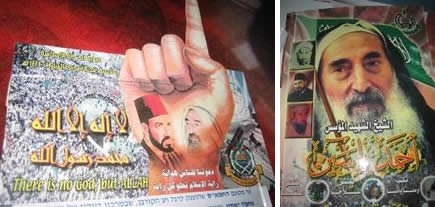
Left: A Hamas gift for Eid al-Adha, part of its da'wah activity. Left and right the figures are of Hassan al-Banna and Ahmed Yassin. The Hamas emblem is in the lower right-hand corner. Right: A poster of Hamas founder Ahmed Yassin. To his left, pictures of admired Hamas figures. From top to bottom, Izz al-Din al-Qassam, Hassan al-Banna and Abdallah Azzam.
Note:
[1] For further information you can download “The Hamas Charter (1988): Overtly anti-Semitic and anti-West, radical Islamic in outlook, it stresses Hamas’ ideological commitment to destroy the State of Israel through a long-term holy war (jihad)”.



 RSS
RSS

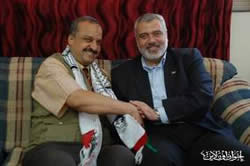
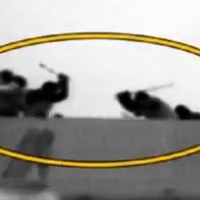
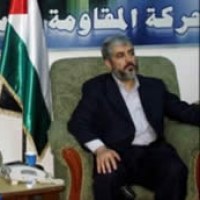

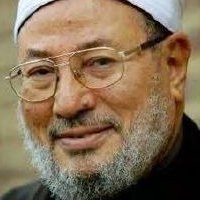
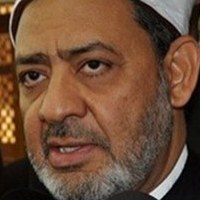




#Hamas Tries to Exploit the #Egyptian #Revolution | #Israel #jcot #Hamas #MuslimBrotherhood #Islamism http://j.mp/fe28cb
RT @CrethiPlethi: #Hamas Tries to Exploit the #Egyptian #Revolution | #Israel #jcot #Hamas #MuslimBrotherhood #Islamism http://j.mp/fe28cb
RT @CrethiPlethi: #Hamas Tries to Exploit the #Egyptian #Revolution | #Israel #jcot #Hamas #MuslimBrotherhood #Islamism http://j.mp/fe28cb